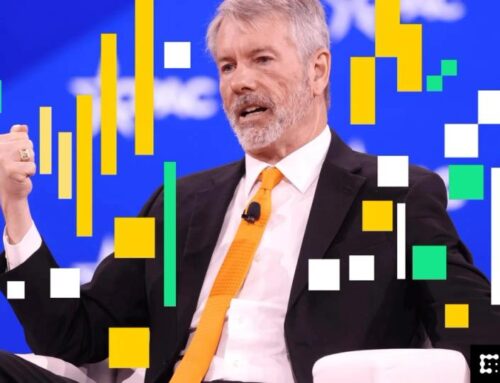The Key to More Clean Energy? Wasting Less of It
April 29, 2025
The clean energy transition is progressing rapidly, but this extraordinary transformation is not without its challenges: outdated power grids and a lack of balancing technology means that we are wasting vast amounts of clean energy and resources through curtailment. To address this, we need an integrated approach combining grid upgrades alongside the greater deployment of balancing power technologies and energy storage to take full advantage of our renewable energy potential in the most cost-effective way.
COMMENTARY
Extraordinary Progress
The global transition to renewable energy is accelerating at an unprecedented pace. A remarkable 5,500 GW of new renewable capacity is expected to become operational by 2030, highlighting the unstoppable momentum surrounding clean power. Currently, renewable capacity stands at 4,448 GW, having climbed significantly from 3,870 GW in 2023. The progress we continue to witness in the clean energy space is impressive, but as we increase the deployment of variable renewable power, we are faced with new challenges.
The Problem
As wind and solar energy flood the grid, many regions are struggling to absorb and distribute the excess power efficiently. This leads to high levels of curtailment, where renewable energy production is paid to shut down, while often other, non-renewable forms of generation continue to operate. According to the International Energy Agency (IEA), curtailment of wind and solar PV recently reached between 5% and 15% in some countries, such as Chile, Ireland, and the UK, as a result of grid constraints and inflexible power generation.
Curtailment poses a challenge both to the direct utilisation of renewables and the wider transition to clean energy. Without sufficient balancing power, such as engine power plants and energy storage, to support intermittent renewables and energy demand, a staggering amount of renewable energy is going to waste—along with the money invested in these projects.
Switching off renewables also means that we are not only under-using the sustainable power at our disposal, but we’re replacing it with energy sources that have higher emissions and generation costs. Additionally, a grid lacking in adequate balancing power and flexibility results in an unreliable energy supply and could even increase the risk of blackouts. In the context of growing deployment of renewables, without targeted action, the challenges presented by curtailment will only continue to get worse.
Recent elections around the world have resulted in shifting policy focus from decarbonisation to economic competitiveness. However, with proper planning, both can be achieved simultaneously. With opponents of clean energy searching for reasons to shut down the deployment of renewables, we cannot afford for energy curtailment to overshadow the benefits of clean power and stall our progress.
The window to limit global warming to avoid the negative impacts of climate change is rapidly closing, and the speed at which we scale up clean energy solutions will define the success of our transition. To deliver affordable, clean energy globally we must first tackle the wasting of renewable energy by delivering more optimised and flexible power systems.
The Solution
To achieve efficient and reliable, sustainable power systems at pace, we must think holistically and systemically. Measures to avoid curtailment, including upgrading our power grid and investing in balancing technologies, need to be built into our clean energy strategies from day one.
Wärtsilä has modelled more than 200 power systems globally and found that the combination of renewables, energy storage, and future-proof grid balancing engines offer the quickest, lowest-cost, and lowest-emission pathway to a 100% energy future. Only an integrated approach encompassing both a modernised grid and balancing infrastructure will allow us to reduce curtailment and take full advantage of the renewable power at our disposal.
Wärtsilä’s global power system modelling, recently published in the Crossroads to Net Zero report, shows that a power system including balancing power has significant advantages when it comes to both cost and CO2 reductions. The report details an integrated model of the global energy system comparing two scenarios—a renewables-only pathway with energy storage systems and one that also includes balancing power plants—to interrogate the difference that balancing power plants can make to the energy transition.
The data reveals that a mix of technologies and a relatively small amount of balancing power could generate cumulative savings of €65 trillion by 2050 compared to a pathway including only renewables and energy storage, due to a reduced need for surplus renewable capacity. The data also showed how, without balancing technologies, an area the size of Europe will need to be covered with renewable power to reach a clean energy future, and that by 2050 we could be wasting 55% of renewable energy through curtailment globally. By integrating measures such as these power plants into our energy system, we can avoid energy wastage, save money, and reduce the cumulative CO2 emissions of the power sector on the road to 2050.
What Next?
Decisive action from across the power sector is crucial to achieve a low-cost and low-emission energy transition. To effectively utilise renewable energy and reduce the level of curtailment, an integrated approach is needed. This means we must:
- Enable Accelerated Expansion of Renewables and Balancing Technologies to Ensure Affordable Electricity. To fully harness the potential of wind and solar, we need to expand transmission networks, streamline permitting, and invest in regional interconnectors that enable energy to flow freely. Just as crucial is the rapid deployment of balancing technologies, such as flexible power generation and energy storage, which keep the grid stable when renewables fluctuate. Without these solutions, we risk an inefficient system that forces clean energy offline while still relying on fossil fuels, wasting renewable power while driving up costs and emissions.
- Redesign Electricity Markets to Incentivise Flexibility. Beyond infrastructure, electricity markets must evolve to incentivise flexibility. Today’s market structures were designed for centralised, fossil-based power generation and do not enable the flexibility needed for renewables to thrive. Increasing dispatch granularity to five-minute intervals, introducing ancillary services, and ensuring bankable revenue models for balancing technologies will drive the investment required to support renewable energy growth. Without these market reforms, curtailment will persist, stalling decarbonisation and increasing costs for consumers.
- Choose the Right Future-Proof Technologies and Prepare for Sustainable Fuels. Technology solutions already exist to eliminate curtailment and future-proof the power sector. Flexible balancing engines can provide rapid-response support for renewables while offering a pathway to sustainable fuels in the future. Using gas as a transition fuel, these technologies can enable the phase-out of coal while cutting 75% of annual power sector CO2 emissions by 2035. But achieving a fully decarbonised, efficient grid will also require strategic policy action, including incentives for sustainable fuels and long-term infrastructure investment.
While we have made incredible progress in the transition to clean energy, we need to tackle the challenge of curtailment head-on. Only by addressing renewable energy waste today can we deliver clean power systems at the lowest cost and emissions for the generations to come.
—Anders Lindberg is Energy President at Wärtsilä.
Search
RECENT PRESS RELEASES
Related Post




